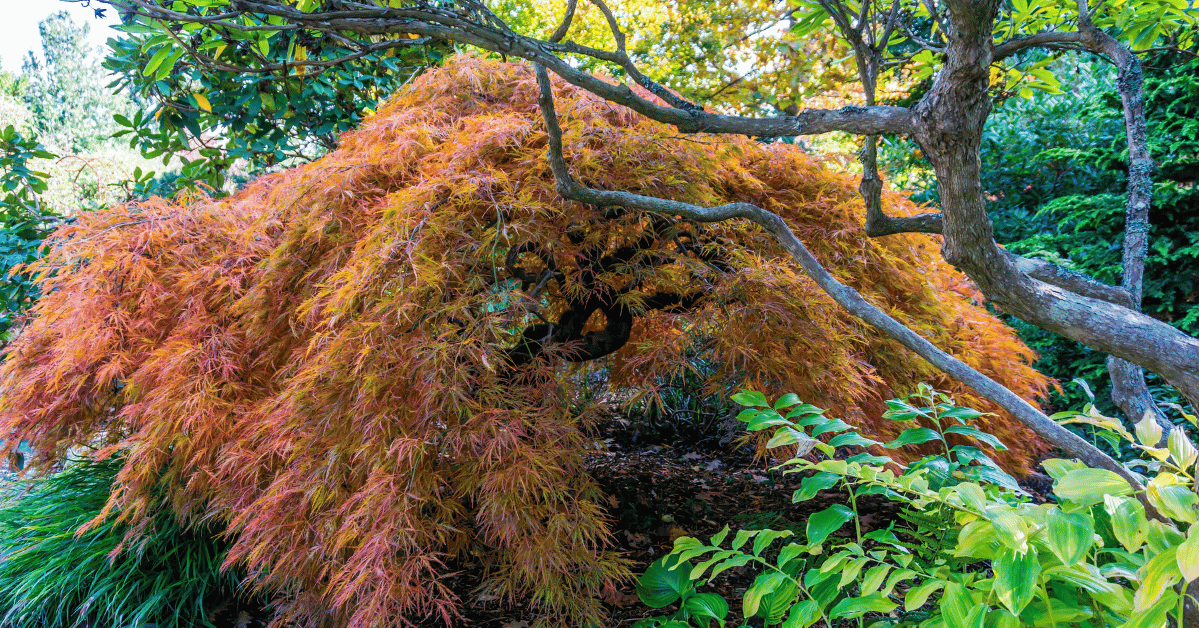As the sun beats down and temperatures soar, it's not just us humans who feel the heat. Trees, too, face their own set of challenges during hot weather. Proper tree care during these scorching months is crucial to ensure the health and vitality of your green companions. In this article, we'll explore essential tips for hot-weather tree care, guided by the expertise of certified arborists at Strobert Tree Services.
Everything Starts in the Soil
The foundation of healthy trees begins with the soil they grow in. During hot weather, soil moisture levels can quickly deplete, posing a significant threat to your trees. Properly mulching your trees can help retain soil moisture and regulate soil temperature.
Mulching Tips:
- Apply a layer of mulch around the tree's base, extending it to the tree's drip line. This helps retain moisture and regulate soil temperature.
- Use organic mulch like wood chips or compost. Organic mulch enriches the soil as it breaks down.
- Avoid mulch volcanoes – a mound piled against the tree trunk, as this can trap moisture against the bark and lead to rot.
Native Delaware Trees Are Better
Choosing the suitable tree species for your local climate is fundamental in hot-weather tree care. Native trees are often better adapted to withstand the challenges posed by extreme weather conditions. Native trees have evolved to thrive in your area's specific climate and soil conditions.
Benefits of Native Trees:
- They require less water and maintenance.
- They are naturally resistant to local pests and diseases.
- They contribute to the local ecosystem, supporting native wildlife.
Use Proper Pruning Techniques
Pruning is an essential aspect of tree care year-round and is no different during hot weather. Proper pruning helps maintain tree structure, reduces the risk of limb failure, and allows better airflow through the canopy, which can mitigate some of the stress trees experience in hot weather.
Pruning Tips:
- Prune dead or diseased branches promptly to prevent further stress on the tree.
- Avoid heavy pruning during extreme heat, as it can shock the tree. Instead, schedule major pruning during cooler months.
- Hire a certified arborist to assess and prune your trees professionally.
Check for Disease and Insect Infestation
Hot weather can weaken trees, making them more susceptible to diseases and insect infestations. Regularly inspect your trees for signs of trouble, such as yellowing leaves, unusual spots, or visible pests. Early detection is critical to addressing issues before they become severe.
Warning Signs to Look For:
- Unusual leaf discoloration or spots.
- Holes or tunnels in the bark.
- Excessive sap or resin production.
- Sudden wilting or drooping of leaves.
Tree Root Damage Often Happens During Landscape Installation
When planning landscaping projects or installing new features in your yard, it's essential to consider the impact on your trees. Tree roots are sensitive and can be easily damaged during construction or landscaping. Compacted soil, changes in grade, or the removal of too much soil can harm tree roots.
Protecting Tree Roots During Landscaping:
- Establish a clear boundary around the tree's root zone, the drip line, and avoid excavation or compaction within this area.
- Consult with a certified arborist before starting any landscaping project near trees to ensure their protection.
Sometimes You Need to Water Your Trees
During hot, dry spells, trees can suffer from water stress. Signs of water stress include wilting leaves, leaf scorch, and premature leaf drop. To keep your trees healthy, supplemental watering may be necessary.
Proper Tree Watering:
- Water deeply and infrequently rather than shallow, frequent watering. This encourages the development of deep root systems.
- Use a soaker hose or drip irrigation to ensure slow, deep watering.
- Water in the early morning or late evening to minimize water loss through evaporation.
Have Your Trees Inspected Once a Year
Regular tree inspections by certified arborists are critical to proactive tree care. An annual review can help identify potential issues early, allowing for prompt intervention and preventive measures.
Benefits of Annual Tree Inspections:
- Early detection and treatment of diseases or pest infestations.
- Evaluation of overall tree health and structural integrity.
- Customized care plans to address specific tree needs.
Contact Strobert Tree Services - Leaders in Tree Care in Delaware, Pennsylvania, Maryland, & New Jersey
When it comes to hot weather tree care and tree maintenance in general, it's always a wise choice to seek the expertise of certified arborists. Strobert Tree Services, serving Delaware, Pennsylvania, Maryland, and New Jersey, is your trusted partner in tree care. Our team of professionals has the knowledge and experience to ensure your trees survive and thrive, even in the most challenging weather conditions.
Don't wait until your trees show signs of distress; take proactive steps to care for them during hot weather. Contact Strobert Tree Services today to schedule a comprehensive tree care assessment and keep your green companions healthy and vibrant year-round.











